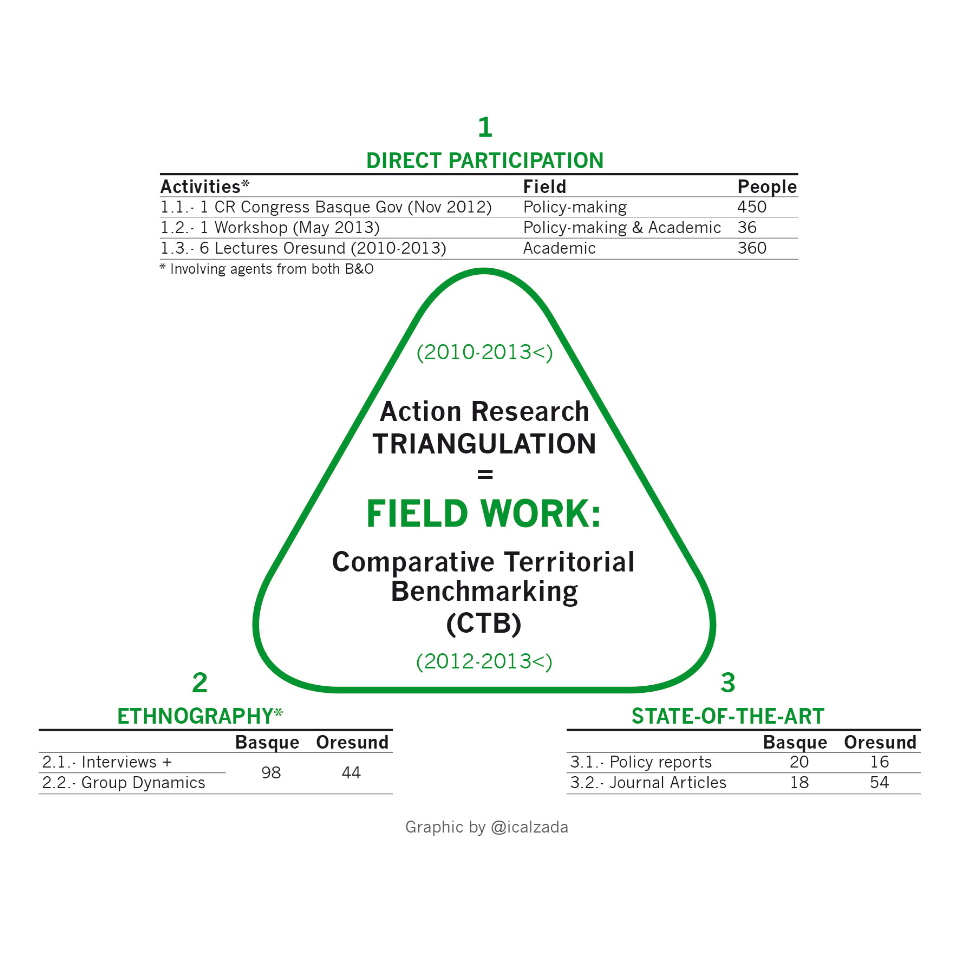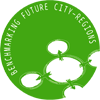The technique applied as a research strategy for the Comparative Territorial Benchmarking & Connection is called Triangulation Method. This qualitative methodology is applied to the study of the eight cases covered by this project, “The Future of City-Regions”.
The connexion and comparisons established between the City Regions (Herrschel & Tallberg, 2011; Vall, 2007: 149; Power et al., 2010) of Basque and Oresund are presented as an example through the graphic representations and images accompanying this text.
The procedural development of each of the three techniques used as methodology are displayed below.
- Direct Participation: Refers to holding a Congress, several Workshops and conferences at different Universities in order to obtain direct feedback from the scientific, academic, institutional, political and professional communities.
- Ethnography: Getting directly involved as a researcher can influence the results of the research itself. For this reason, ethnographic techniques are deemed indispensable. That is to say, the technical contrast between group dynamics (or research circles) is additionally necessary to carrying out in-depth interviews. But that is not all. Diverse methods of ethnological research are currently being perfected within Digital Anthropology/Sociology/Humanities via the incorporation of advances in technology. In other words, anthropological ethnographies are very useful for the description of a specific territory. For this purpose, social platforms such as Instagram, Twitter, Facebook, and/or LinkedIn have been used throughout the process. In addition to sharing information, these digital environments offer the opportunity to formalise and reflect on data which remain archived a posteriori.
- State-of-the-Art: Finally, and with the aim of formalising and making the best use of qualitative data, the mapping and qualitative analysis allow factors, policies and behaviours of the territorial reality to be identified. The scientific articles and publications from certain political institutions may prove very useful to accomplish this.


